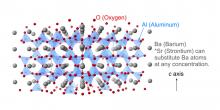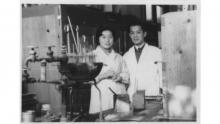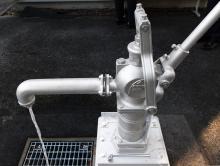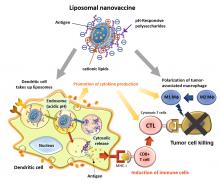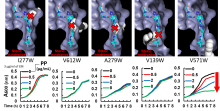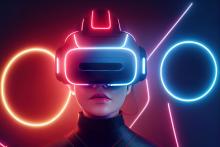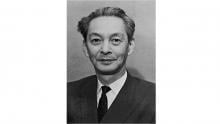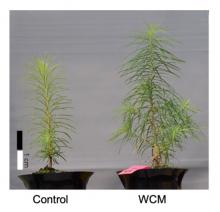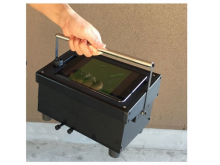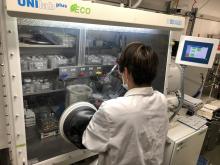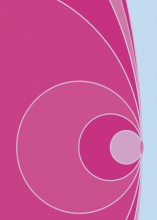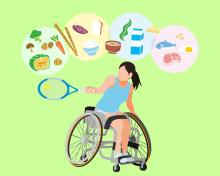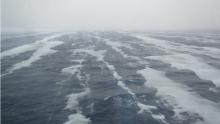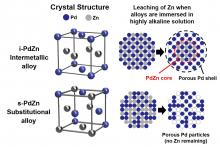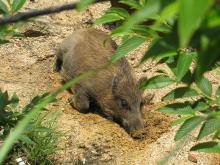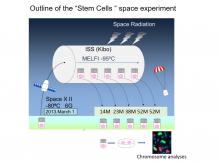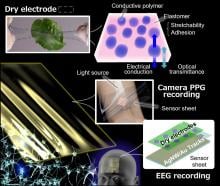Japan
News
07 Nov 2022
Researchers led by Osaka University show that a molecule called T-cadherin can be secreted in a soluble form. Soluble T-cadherin interacts with pancreatic insulin-producing β cells via the Notch signaling pathway to promote their proliferation and increase the production of insulin. Recombinant T-cadherin stimulated Notch signaling in isolated mouse pancreatic islets, which contain β cells, indicating that T-cadherin may have therapeutic potential for diabetes.
07 Nov 2022
Osaka Metropolitan University scientists have discovered that, in the crystalline solid Ba1-xSrxAl2O4, a highly disordered atomic arrangement is formed in the AlO4 network at chemical compositions near the structural quantum critical point, resulting in characteristics of both crystalline and amorphous materials. This hybrid state, which the research team was the first to discover, can be created simply by mixing raw materials uniformly and heating them. These findings are expected to help with the development of hybrid materials for use in harsh environments, such as outer space, by applying the technique to a variety of materials.
04 Nov 2022
Scientists in Japan have combined two computational models to extract more data on steel alloys from a single test, with implications for the discovery of new materials.
03 Nov 2022
Giants in History: Tsuneko (1933) and Reiji Okazaki ( 1930 – 1975)were a Japanese couple who discovered Okazaki fragments – short sequences of DNA that are synthesized during DNA replication and linked together to form a continuous strand.
03 Nov 2022
Researchers from Osaka University have demonstrated a proof-of-concept for a novel use of artificial intelligence for enzyme engineering that does not require an enzyme’s crystal structure. By analyzing the amino acid sequences of malic enzymes from various living organisms, the researchers identified the amino acids that are pertinent to using different redox cofactors. The results of this work will facilitate retooling enzymes in research laboratories and the biotech industry.
02 Nov 2022
Groundwater is considered both an environmental and industrial resource, but a new study indicates it is also an important resource in disaster prevention. Osaka Metropolitan University researchers conducted research surveys of 91 well owners and 328 welfare facilities affected by the 2016 Kumamoto Earthquake. The surveys clarified groundwater use following the earthquake and policy issues that could make the use of emergency wells more effective in the wake of future disasters. The surveys’ findings provide useful data for city governments that have installed or are considering installing emergency wells.
01 Nov 2022
Triple-negative breast cancer (TNBC) tumors gain immunosuppression and chemoresistance through interactions between interleukin 34 and myeloid-derived suppressor cells, researchers find.
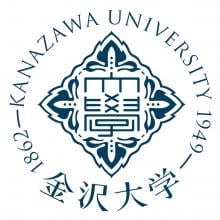
01 Nov 2022
6th NanoLSI Symposium: International symposium on Nanoprobe Technology for Understanding Molecular Systems in Kanazawa, Japan
31 Oct 2022
A research group at Osaka Metropolitan University has developed a drug delivery system that activates a strong cellular immune response to attack cancer cells, using one-tenth of the amount of antigen needed in the group’s previous work. By incorporating positively charged cationic lipids into liposomes and adding negatively charged pH-responsive polysaccharides to the surface, the research group increased the uptake efficiency of liposomes encapsulating cancer antigens by dendritic cells by approximately five times, which increased cytokine production by about 100 times. This increased M1-type macrophages, which activate cancer immunity, and decreased M2-type macrophages, which promote cancer growth.
31 Oct 2022
Researchers from Osaka University used a combination of genetic manipulation and protein structural analysis to determine how the position of “bulky” amino acids influences the ability of efflux pump inhibitors to bind bacterial pump proteins and so reduce their resistance to antibiotics. This work has implications for our understanding of bacterial antibiotic resistance, and may be useful in the rational design of drugs that target bacteria that have evolved antibiotic resistance.
30 Oct 2022
New research identifies a unique way that people find connection in the modern world and provides novel insight into the fields of anthropomorphism, virtual interactions, and relationship science.
28 Oct 2022
Osaka Metropolitan University scientists conducted a 7-year study on seedling recruitment and mortality in a national park in Chiang Mai, in northern Thailand. During the study period, an extremely strong El Niño event occurred, leading to a stronger and longer drought than normal. Seasonally dry tropical forests (SDTFs), which experience an annual dry season, are considered drought-tolerant. Nevertheless, the study found that seedling mortality increased in SDTFs when severe and prolonged drought occurred. The mortality rate was greater in evergreen forests at higher elevations that usually experience less severe drought than in deciduous forests at lower elevations where severe drought is more common. The study results advance the understanding of the effects of El Niño on seedling dynamics in SDTFs.
27 Oct 2022
Giants in History: Shinichiro Tomonaga (31 March 1906 – 8 July 1979), together with Richard Feynman and Julian Schwinger, was awarded the Nobel Prize in Physics in 1965, for their contributions to advance the field of quantum electrodynamics.
26 Oct 2022
Researchers from Osaka University have demonstrated a proof-of-concept for a novel molecular hydrogen production method that bypasses the need for expensive purification steps. They developed a system where hydrogen is separated and stored in liquid organic hydrogen carriers by catalysis of triaryl boranes in one seamless process. The results of this work will help facilitate the transition to a hydrogen-based economy that is necessary for a more sustainable future.
26 Oct 2022
Plastic sheets coated with an Eu3+ film that converts UV light to red light were able to accelerate growth of vegetal plants and trees.
26 Oct 2022
Asbestos is a toxic substance that is found in older buildings, as well as in cosmetics and products for children. As testing for its presence can be problematic, Hiroshima University Professor Akio Kuroda has been working on a novel solution.
25 Oct 2022
Researchers from The Institute of Scientific and Industrial Research (SANKEN) at Osaka University and collaborating partners prepared hierarchical hydrogels and moldings that consisted of anisotropic, ecofriendly cellulose nanofibers. By simply tailoring the applied voltage during fabrication, complex architectures—such as microneedles and multilayer hydrogels—were easy to prepare. The results of this work will reduce the need for petroleum-based plastics, and in so doing minimize a long-standing source of environmentally persistent waste.
25 Oct 2022
Making complex polymers with precisely controlled structures becomes much simpler thanks to a new ‘one-pot-and-one-step’ synthesis procedure.
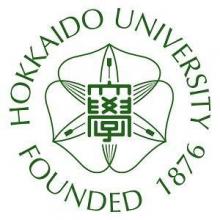
24 Oct 2022
Investigations in Japan have uncovered some molecular mechanisms behind mitochondrial dysfunction in chronic heart failure.
20 Oct 2022
Osaka University researchers showed that the predictions of Einstein’s theory of special relativity in electromagnetism could be detected in the contraction of the electric field created by ultrafast electrons. By achieving femtosecond resolution, they were able to visualize the contracted electric field for the first time. This work can be applicable to particle accelerators and high-energy physics.
20 Oct 2022
An Osaka Metropolitan University researcher has provided a review article regarding INSL3, a circulating hormone secreted from the gonads, in domestic animals, in comparison to rodents and humans. In this review article, the author describes his research group’s work that (1) developed immunoassays, for the first time, that can measure circulating INSL3 in multiple domestic mammals, including cattle, goats, sheep, pigs, horses, and dogs, (2) provided evidence in studies with bulls and bucks that INSL3 offers more reliable and stable values by a single blood collection than testosterone, a conventional and well-known testicular hormone, and (3) suggested that blood INSL3 concentrations would be a good biomarker for testicular and reproductive functions in normal and abnormal male domestic animals. These findings suggest that the INSL3 assay might simplify the evaluation of reproductive functions in various male domestic animals. In particular, the assay method may facilitate earlier selection of valuable male animals such as beef sire bulls (Image) with higher reproductive performance, contributing to reductions in the labor and costs required for sire production.
20 Oct 2022
Osaka Metropolitan University researchers interviewed active para-athletes with lower-limb disabilities who compete at an international level, about diet and nutrition. The research team found that what para-athletes considered an ideal diet was not necessarily optimized for improving athletic performance, and even when para-athletes understood diets geared towards athletic performance, characteristics of their disabilities impose barriers to implementing dietary changes. Understanding these concerns and struggles is important for nutritionists who support para-athletes in sports nutrition.
19 Oct 2022
Scientists have uncovered new details of how ice forming below the ocean surface in Antarctica provides cold dense water that sinks to the seabed in an important aspect of global water circulation.
19 Oct 2022
Osaka Metropolitan University researchers conducted a study of human mobility to find effective lifestyle changes that enable people to exist with the novel coronavirus COVID-19, while maintaining social and economic activities. They found that restricting the human mobility in specific areas according to the state of the pandemic, rather than uniformly controlling human mobility, could be effective in reducing the number of new COVID-19 infections.
19 Oct 2022
Pyroxenes are a major group of rock-forming minerals. Osaka Metropolitan University scientists investigated the iron ion status of a calcium-rich pyroxene, using Mössbauer spectroscopy on thin sections of single crystals. The study revealed that in pyroxene crystals consisting of roughly 50% calcium, the tensor that determines the ratios of iron ions at the Mössbauer spectral peaks in the M1 sites—one of two types of cation positions in the pyroxene crystal structure—is independent of the iron content but dependent on the calcium content. The research findings have clarified one of the physical properties of pyroxenes, facilitating detailed future analysis of iron using Mössbauer spectroscopy on mineral flakes.
18 Oct 2022
Osaka Metropolitan University researchers have created intermetallic alloy nanoparticles of palladium and zinc with an alternating arrangement of zinc and palladium atoms. The intermetallic alloy is more corrosion-resistant than substitutional alloys while retaining the electrocatalytic properties of both metals, which could be useful for developing new non-precious metal electrocatalysts.
18 Oct 2022
Researchers develop a ground-breaking model to estimate bait vaccination effectiveness in wild animals based on the proportion of immunized animals in a population and the number of vaccine applications.
17 Oct 2022
A long-term experiment aboard the International Space Station has tested the effect of space radiation on mouse embryonic stem cells. Their findings will contribute to helping scientists better assess the safety and risks related to space radiation for future human space flights. The findings are published in the journal Heliyon.
17 Oct 2022
Researchers from Osaka University have developed a way of printing edible QR codes—a kind of barcode—within cookies, meaning that the tag is embedded within the food itself. Crucially, the tag doesn’t change the flavor or outer appearance of the cookie, and can be read using a backlight while the cookie remains intact. This new method has great commercial potential for improving food safety and traceability in an environmentally friendly way.
17 Oct 2022
Researchers from Osaka University have developed a skin-like device to measure brain activity via electroencephalography, which uses electrodes to measure electrical activity on the scalp (reflecting underlying brain activity). The device has other useful applications, such as measuring heart rate and blood oxygen levels. Wearable devices that can remotely assess brain health in everyday settings are likely to improve healthcare for millions of people worldwide.
Researchers
Sorry, no researchers coming up for this topic.
Giants in history
Ruby Sakae Hirose (1904 – 1960) was a Japanese-American scientist whose research contributed significantly to our understanding of blood clotting, allergies and cancer.
Haisako Koyama (1916 – 1997) was a Japanese solar observer whose dedication to recording sunspots – cooler parts of the sun’s surface that appear dark – produced a sunspot record of historic importance.
Michiaki Takahashi (17 February 1928 – 16 December 2013) was a Japanese virologist who developed the first chickenpox vaccine.
Toshiko Yuasa (11 December 1909 – 1 February 1980) was the first Japanese female physicist whose research on radioactivity shed light on beta decay – the process in which an atom emits a beta particle (electron) and turns into a different element.
Baron Kitasato Shibasaburo (29 January 1856 – 13 June 1931) was a Japanese physician and bacteriologist whose work led to a new understanding of preventing and treating tetanus, diphtheria and anthrax.
By isolating soil microorganisms and studying the compounds they produce, Satoshi Omura (born 1935) discovered almost 500 organic compounds with unique properties that were produced by these microorganisms, including many new antibiotics.
In 1915, pathologist Katsusaburo Yamagiwa and his research assistant Koichi Ichikawa became the first to prove that chronic exposure to chemicals can cause cancer.
In 1915, Koichi Ichikawa along with pathologist Katsusaburo Yamagiwa became the first to prove that chronic exposure to chemicals can cause cancer.
Reiji Okazaki (8 October 1930 – 1 August 1975) and Tsuneko (7 June 1933) were a Japanese couple who discovered Okazaki fragments – short sequences of DNA that are synthesized during DNA replication and linked together to form a continuous strand.
Tsuneko (7 June 1933) and Reiji Okazaki (8 October 1930 – 1 August 1975) were a Japanese couple who discovered Okazaki fragments – short sequences of DNA that are synthesized during DNA replication and linked together to form a continuous strand.
Husband and wife team, Kimishige (3 December 1925 – 6 July 2018) and Teruko Ishizaka (28 September 1926 – 4 June 2019) discovered the antibody class Immunoglobulin E (IgE) that triggers allergic reactions. They also discovered that IgE antibodies attach to white blood cells, known as mast cells, releasing histamine, which causes allergic reactions.
Husband and wife team, Kimishige (3 December 1925 – 6 July 2018) and Teruko Ishizaka (28 September 1926 – 4 June 2019) discovered the antibody class Immunoglobulin E (IgE) that triggers allergic reactions. They also discovered that IgE antibodies attach to white blood cells, known as mast cells, releasing histamine, which causes allergic reactions.
Japanese chemist Takamine Jokichi (3 November 1854 – 22 July 1922) founded the Tokyo Artificial Fertilizer Company, where he isolated a starch-digesting enzyme (named takadiastase) from the fungus Aspergillus oryzae.
Hideki Yukawa (23 January 1907 – 8 September 1981) was awarded the Nobel Prize in Physics in 1949 for predicting the existence of the pi meson subatomic particle. Japan’s first Nobel laureate, Yakawa also expressed his support for nuclear disarmament by signing the Russell–Einstein Manifesto in 1955.
Shinichiro Tomonaga (31 March 1906 – 8 July 1979), together with Richard Feynman and Julian Schwinger, was awarded the Nobel Prize in Physics in 1965, for their contributions to advance the field of quantum electrodynamics. Tomonaga was also a strong proponent of peace, who actively campaigned against the proliferation of nuclear weapons and promoted the peaceful use of nuclear energy.
Japanese chemist Kenichi Fukui (4 October 1918 – 9 January 1998) was the first Asian scientist to be awarded the Nobel Prize in Chemistry. Together with Roald Hoffman, he received this honour in 1981 for his independent research into the mechanisms of chemical reactions.
Minoru Shirota (April 23, 1899 – March 10, 1982) was a Japanese microbiologist who invented the popular fermented drink Yakult.
Japanese physicist Ukichiro Nakaya (1900-1962) made the world’s first artificial snowflakes. He started his research on snow crystals in the early 1930s at Hokkaido University, where there is an unlimited supply of natural snow in winter. By taking over 3,000 photographs, he established a classification of natural snow crystals and described their relationship with weather conditions.
The techniques that make industrial pearl culturing possible were developed over a century ago at the Misaki Marine Biological Station in Japan. The station’s first director, Professor Kakichi Mitsukuri, emphasized to Kokichi Mikimoto in 1890 that stimulating pearl sac formation was important for pearl growth, and they went on to successfully develop methods for culturing pearls.
The field of solid-state ionics originated in Europe, but Takehiko Takahashi of Nagoya University in Japan was the first to coin the term ‘solid ionics’ in 1967. ‘Solid-state ionics’ first appeared in 1971 in another of his papers, and was likely a play on ‘solid-state electronics’, another rapidly growing field at the time.
Chika Kuroda (24 March 1884 – 8 November 1968) was a Japanese chemist whose research focussed on the structures of natural pigments.
Motoo Kimura (13 November 1924 – 13 November 1994) was a Japanese theoretical population geneticist who is best remembered for developing the neutral theory of molecular evolution.
Osamu Shimomura (27 August 1928 – 19 October 2018) was a Japanese organic chemist and marine biologist who dedicated his career to understanding how organisms emitted light.
Kikunae Ikeda (8 October 1864 – 3 May 1936) was a Japanese chemist who discovered the fifth basic taste, umami.
Umetaro Suzuki (7 April 1874 – 20 September 1943) was a Japanese scientist best remembered for his research on beriberi, a disease caused by vitamin B1 deficiency, characterized by limb stiffness, paralysis and pain.
Kono Yasui (16 February 1880 – 24 March 1971) was a Japanese botanist who researched the genetics of poppies, corn and spiderworts and surveyed the plants that had been affected by the nuclear fallout after the atomic bombings of Hiroshima and Nagasaki.
Hitoshi Kihara (1893 – 1986) was one of the most famous Japanese geneticists of the 20th century. One of his most significant contributions was identifying sex chromosomes (X and Y) in flowering plants.
Michiyo Tsujimura (17 September 1888 – 1 June 1969) was a Japanese agricultural scientist and biochemist recognized for her research of green tea components.
A Japanese surgeon, Tetsuzo Akutsu (20 August 1922 – 9 August 2007) built the first artificial heart capable of keeping an animal alive.
Ogino Ginko (3 March 1851 – 23 June 1913) was the first registered female doctor to practise modern medicine in Japan.
Japanese geochemist Katsuko Saruhashi developed the first method and tools for measuring carbon dioxide in seawater



